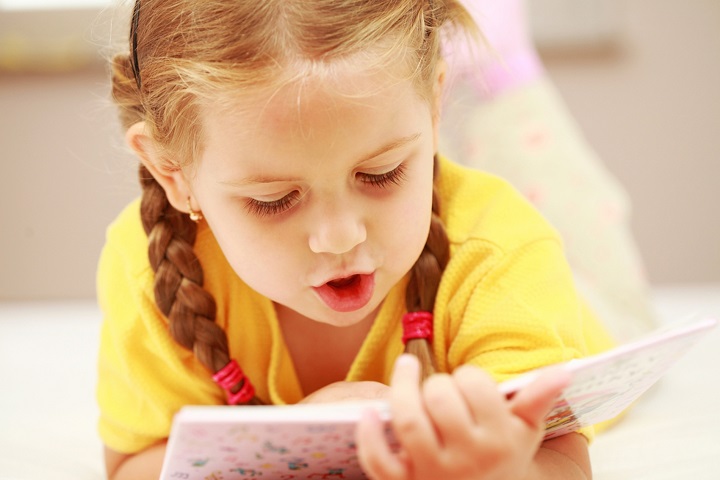A toddler’s understanding that a simple word differs from a simple drawing is an early indicator of future reading ability, according to new research.

Children between three and five, who had not received any formal reading or writing instruction, were tested to see how well they understood that a written word, such as dog, has one specific pronunciation (“dog”) as compared with a simple drawing of a dog, which could be correctly labelled as the image of a dog, a puppy or even a pet named Spot, said researchers.
“Our results show that children have some knowledge about the fundamental properties of writing from a surprisingly early age,” said study co-author Rebecca Treiman, Washington University in St. Louis.
Treiman a professor of child psychology and development said, “based on the results, it may be possible to determine at an early age which children are progressing well in the learning of emergent literacy skills and which children may need extra attention.”
According to the researchers, in their first test, researchers read the written word “dog” to the children.
In the second test, children were shown words such as dog, cat or doll, sometimes in cursive to rule out guessing if kids recognized a letter. Other children were shown simple drawings of those objects. Researchers would say what the word or drawing portrayed. Then they’d bring out a puppet and ask the child if they thought the puppet knew what the words or drawings were.
- ‘Super lice’ are becoming more resistant to chemical shampoos. What to use instead
- Solar eclipse eye damage: More than 160 cases reported in Ontario, Quebec
- Invasive strep: ‘Don’t wait’ to seek care, N.S. woman warns on long road to recovery
- Canadian man dies during Texas Ironman event. His widow wants answers as to why
If the puppet indicated the word “doll” was “baby” or “dog” was “puppy,” many children said the puppet was mistaken. But they more often accepted synonyms for the drawings, showing they were starting to make a distinction between text and drawing, Treiman said.

The different results in the writing and drawing conditions indicate that even young pre-readers have some understanding that a written word stands for one specific linguistic unit in a way that a drawing does not.
“Our finding that preschool-age children who cannot yet read have some understanding that written words represent specific words in a way that drawings do not indicates that young children’s knowledge about the inner structure of writing — how it functions as a symbol — is more sophisticated than previously thought,” said study co-author Lori Markson, psychology professor, Washington University.
Researchers tested 114 children. The results were published in the journal Child Development. The study suggests an additional way to consider reading readiness, beyond the emphasis on phonetics or being able to point out an “A” in the alphabet chart.
Appreciating that writing is “something that stands for something else, it actually is a vehicle for language — that’s pretty powerful stuff,” said Temple University psychology professor Kathy Hirsh-Pasek, a specialist in literacy development who wasn’t involved in the new work.
As for tots’ own scribbling, what they call a family portrait may look like a bunch of grapes but “those squiggles, that ability to use lines to represent something bigger, to represent something deeper than what is on that page, is the great open door into the world of symbolic thought,” Hirsh-Pasek said.
READ MORE: Study: Early clue to why some children may have reading woes
One question is whether children who undergo that developmental step at a later age — say, five or six instead of three or four — might lag on pre-literacy skills. That’s not clear, cautioned Brett Miller, an early learning specialist at the National Institute of Child Health and Human Development, which helped fund the research.
Scientists have long known that reading to very young children helps form the foundation for them to later learn to read, by introducing vocabulary, rhyming, and different speech sounds.
But it’s important to include other activities that bring in writing, too, Treiman said. Look closely at a tot’s scribbles. A child might say, “I’m writing my name,” and eventually the crayon scribble can become smaller and closer to the line than the larger scrawl that the tot proclaims is a picture of a flower or mom, she said.
Previous studies have shown it’s helpful to run a finger under the text when reading to a youngster, because otherwise kids pay more attention to the pictures, Miller said. If the words aren’t pointed out, “they get less exposure to looking at text, and less opportunity to learn that sort of relationship — that text is meaningful and text relates to sound,” he said.
Make sure children see you that you write for a purpose, maybe by having them tell you a story and watch you write it out, adds Hirsh-Pasek. “That’s much richer than just learning what a B or a P is.”
— With files from AP




Comments